This post may contain affiliate links. Please read our disclosure policy.
If you have ever wondered how to make purple sticky rice at home, I will teach you all about the process in this recipe! Naturally colored and infused with subtle notes of coconut, you can serve it either as a sweet or savory dish!
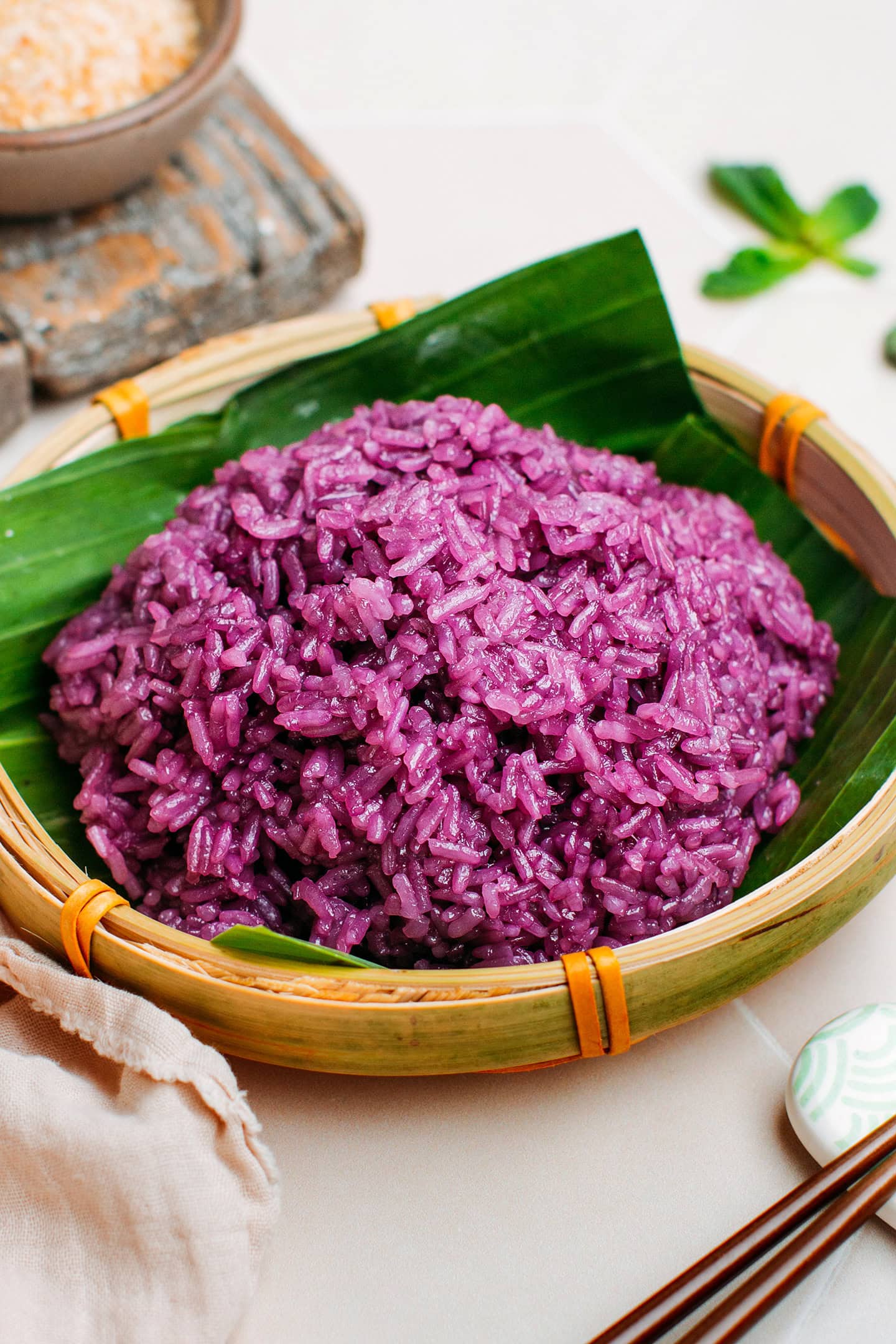
Purple sticky rice might sound confusing at first, so let me explain it a bit more.
If you have ever been to Vietnam or seen videos of the street food there, you may have noticed some sellers carrying a cart featuring a rainbow of colors (I recommend checking out this video showcasing these different types of rice). You’ll typically see five colors: white, orange/red, yellow, green, and…purple. All of them are naturally colored and served with a variety of sweet toppings such as coconut, mung bean paste, or ground peanuts.
This colorful rice is enjoyed as a late afternoon snack in Vietnam, which is why you’ll usually see these carts appearing only later in the day.
In this recipe, I’ll show you how to make the coolest color – the purple one! It doesn’t have any distinct flavor, except a hint of coconut, but it looks appetizing and is a great way to add some color to your plate. Plus, it’s perfectly chewy and can be used to make many dishes!
💜 What Makes It Purple?
So, your main question by now is probably: Where does the purple color come from? Traditionally, it comes from a leaf called “Lá cẩm” in Vietnamese, also known as the magenta plant leaf.
The problem is, unless you are living in Asia or don’t mind doing some gardening to grow it, it’s very difficult to find it. I have tried asking two different local Asian supermarkets, and neither of them could get it.
Here comes the alternative.
Luckily, there is another natural food coloring known as sweet potato powder (or ube powder) that has the same purple color! I have used ube powder before to add flavor to homemade taro milk tea or to color these easter cookies.
While ube extract is another option, I prefer to avoid it for two reasons. First, it’s filled with artificial flavor, which means it will give the rice some taste, while purple potato powder barely impacts any flavor. Second, it also contains artificial coloring. You got it. There is nothing natural about ube extract, and I don’t like using it to make purple rice when a completely natural option exists.
🍚 Ingredient Notes

Sticky Rice
Sticky rice, often mistaken for overcooked regular rice, is actually a different type of rice that is grown for the most part in Asia. It has a chewy texture and tastes slightly sweeter than basmati rice. The key characteristic of sticky rice is that its grains stick to each other after cooking, hence its name.
Where to buy: You can buy sticky rice online or at most well-stocked Asian supermarkets. Keep in mind that it’s sometimes referred to as glutinous or sweet rice.
Ube powder
Ube powder is the magical ingredient that gives the rice its vibrant purple color! It’s made from cooked purple sweet potato that has been dehydrated and then ground into a fine powder.
Note: It’s important to distinguish ube powder and taro powder. Taro powder is a blend of various ingredients, including sugar, creamer, and colorings, typically used to prepare taro milk tea, while ube powder is made solely from purple yams.
Peanut & Sesame Topping
Although entirely optional, I am also sharing the recipe for a traditional topping that consists of ground roasted peanuts, toasted sesame seeds, sugar, and salt. It’s like the sweet Vietnamese cousin of Japanese Furikake. You can sprinkle it on top of the cooked rice to add a balance of sweet, salty, and nutty flavors – you really have to try it, it’s delicious!
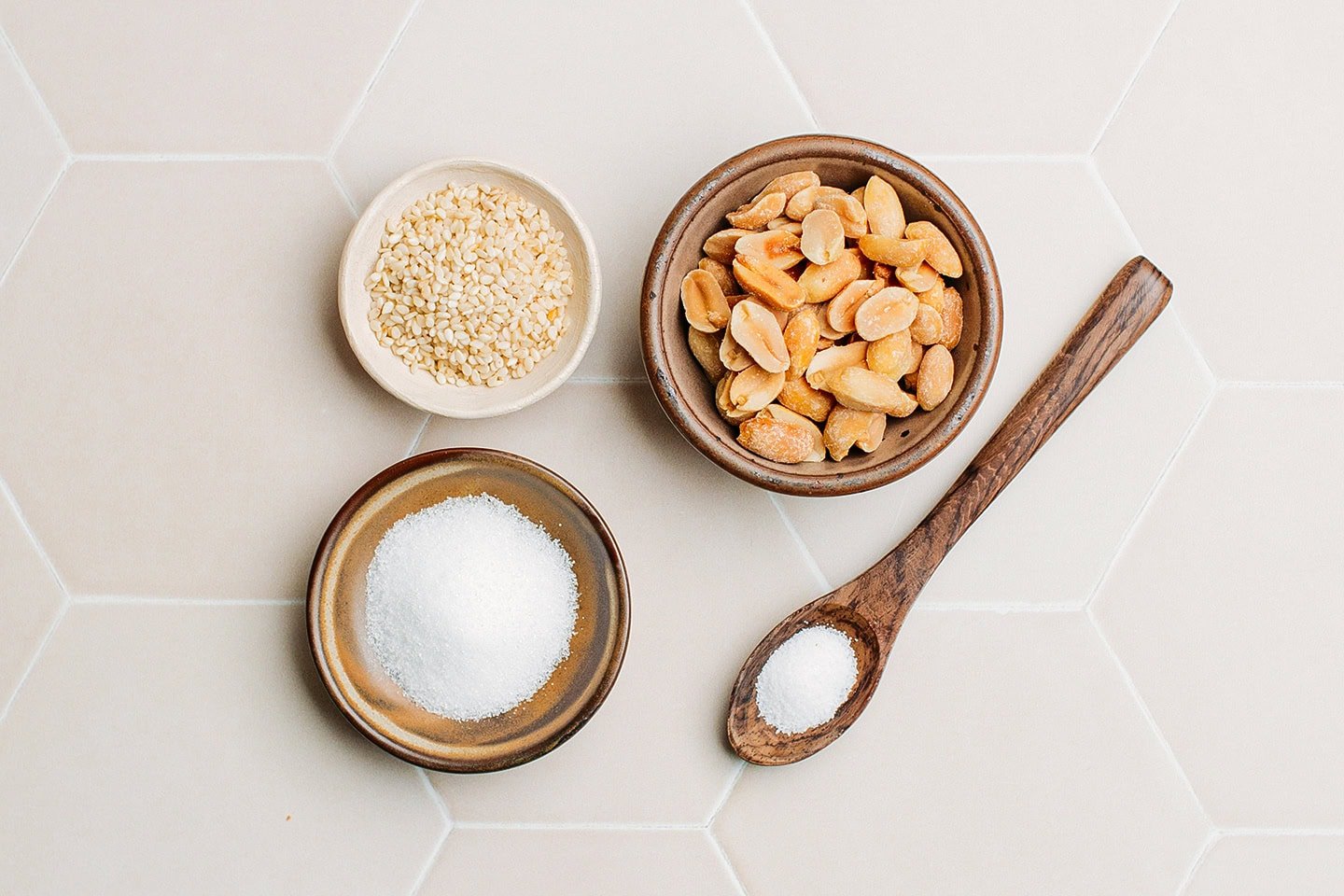
🥣 How to Cook It
1. Soak the rice.
- Wash the rice. Add the rice to a small bowl and cover with water. Gently swirl the rice using your hands until the water becomes cloudy. Strain the rice and repeat this step 2-3 times or until the water is almost clear. Transfer the rice to a small mixing bowl.
- Add the ube powder. Cover the rice with 2/3 cups of water. Add the ube powder and stir using a spoon.
- Soak it overnight. Cover the bowl with plastic wrap and soak the rice overnight or for at least 6 hours. You can stir the rice once halfway through soaking to ensure the grains are evenly colored.
2. Prepare the coconut milk.
The next day, it’s time to cook the rice. Before doing that, you need to make the coconut milk mixture that will be poured over the rice during the steaming step.
- Combine everything. Add the coconut milk, sugar, and salt to a small mixing bowl. Stir using a spoon until the sugar has dissolved. Set aside.
3. Steam the rice.
My favorite method for cooking sticky rice is to use a bamboo steamer basket lined with a cotton cheesecloth. The reason for that is that it’s convenient and allows you to check the doneness of the rice easily, as opposed to using a pressure cooker. If you have a Thai rice steamer, you can use that as well.
- Prepare your steamer. Wet a thin cotton cheesecloth and arrange it on the inside of your bamboo steamer basket. Drain the soaked sticky rice and transfer it to the steamer basket. Close the basket with its lid.
- Steam. Fill a large pot (that can fit under your steamer basket) with 3-4 cups of water and bring it to a boil. Once boiling, place your bamboo basket on top of the pot and steam for 10 minutes.
- Drizzle with coconut milk. After 10 minutes, open the steamer and drizzle half of the coconut milk mixture over the sticky rice. Use a spoon or chopsticks to stir the rice.
- Repeat. Close the steamer, and steam for another 10 minutes before drizzling the remaining coconut milk over the rice and stirring. Finally, steam for 5 more minutes.
- Enjoy. At this point, your sticky rice should be tender while still slightly chewy. It’s ready to serve!
4. Make the topping (Optional)
If you are planning on serving this sticky rice as a sweet snack, like they do in Vietnam, you can top it with a sweet and salty peanut topping. To make the topping:
- Crush the peanuts. Use a pestle and mortar or a small blender to grind the peanuts into small chunks. You can make them finer or coarser, depending on what you like.
- Toast the sesame seeds. Add the raw sesame seeds to a small pan and heat over low-medium heat for 3-5 minutes, stirring regularly until the seeds are golden brown. Be careful, they can burn very fast!
- Combine everything. Transfer the ground peanuts, toasted sesame seeds, sugar, and salt to a small bowl and stir to combine. You can then sprinkle a few tablespoons over your sticky rice!
📔 Tips
Soak the rice – it’s essential!
Sticky rice is not like your daily short-grain rice; it needs to be soaked before being cooked. This allows the rice to absorb water, resulting in a more even and tender texture.
Infuse it with pandan leaves.
If you can get your hands on fresh pandan leaves, feel free to place a few leaves on top of the sticky rice during the steaming step. It will infuse your rice with a wonderful floral aroma!
Check the doneness of the rice.
Depending on the brand of rice used, the soaking time, and other factors, the steaming time may vary a bit. I suggest tasting the rice after 20 minutes. If it’s tender all the way through, your rice is cooked. If it’s still slightly hard on the inside, steam it for a bit longer.
🥜 What to Serve It With
This rice has a mild flavor, so it can be paired with practically everything! Here are a few ideas:
- Mango: You can use this rice to make the popular mango sticky rice! Combine it with sweetened coconut milk and serve it alongside sliced mango for a fruity dessert.
- Savory toppings: If you are more into savory dishes, you can use this rice as a base to make savory sticky rice, also known as Xôi Mặn.
- Poke bowls: Use it as a base to make a plant-based poke bowl! Serve it alongside teriyaki tofu or vegan meatballs, raw vegetables, avocado, and your sauce of choice.
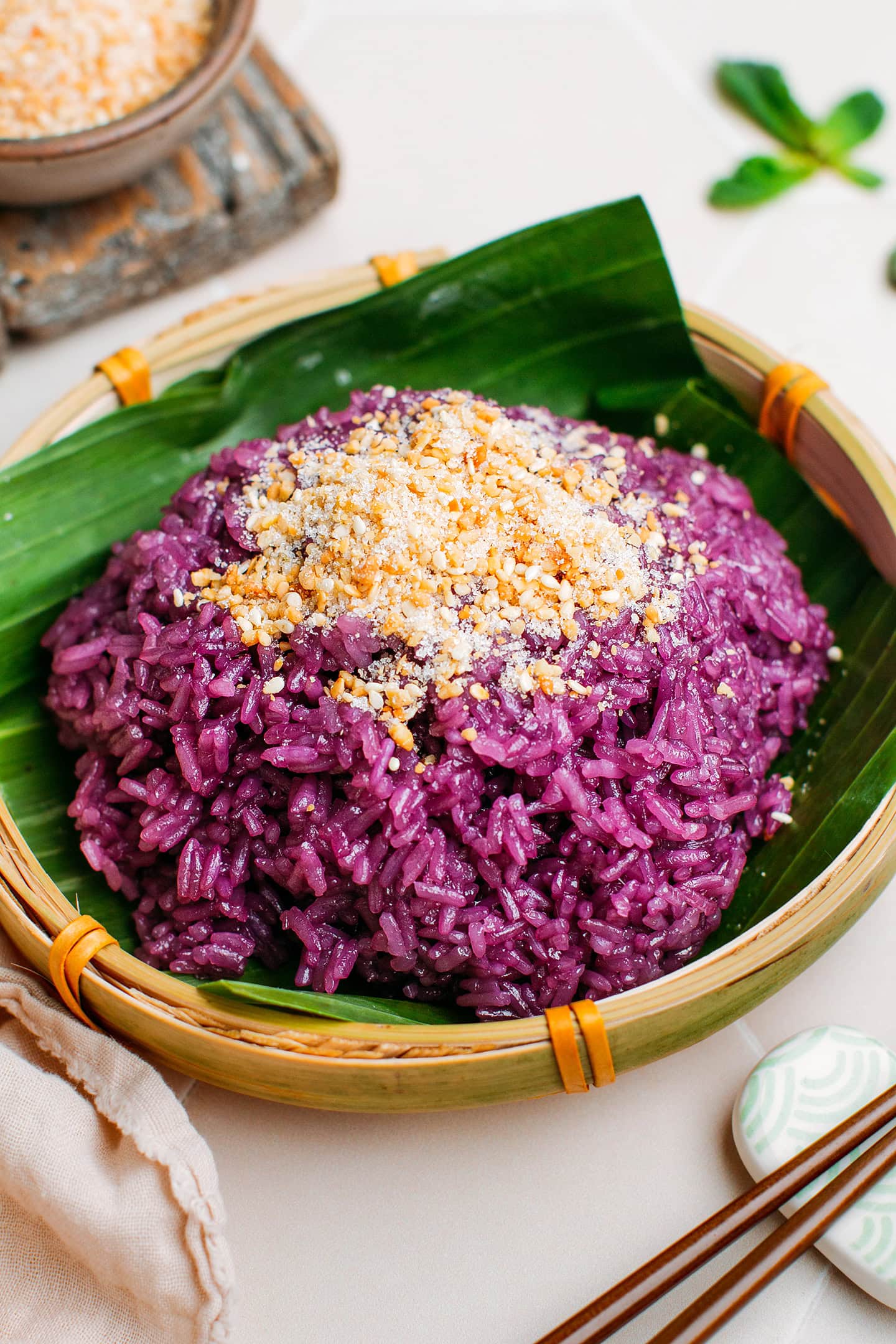
❄️ Storing and Reheating
As with any rice dish, this is best served and enjoyed immediately. You can still reheat leftovers, but they won’t taste as good as on day one.
- To store: You can store the cooked sticky rice in the refrigerator for up to 2 days.
- To reheat: To reheat, flick some water on the sticky rice and place it in a steamer. Reheat for 3-5 minutes over medium heat.
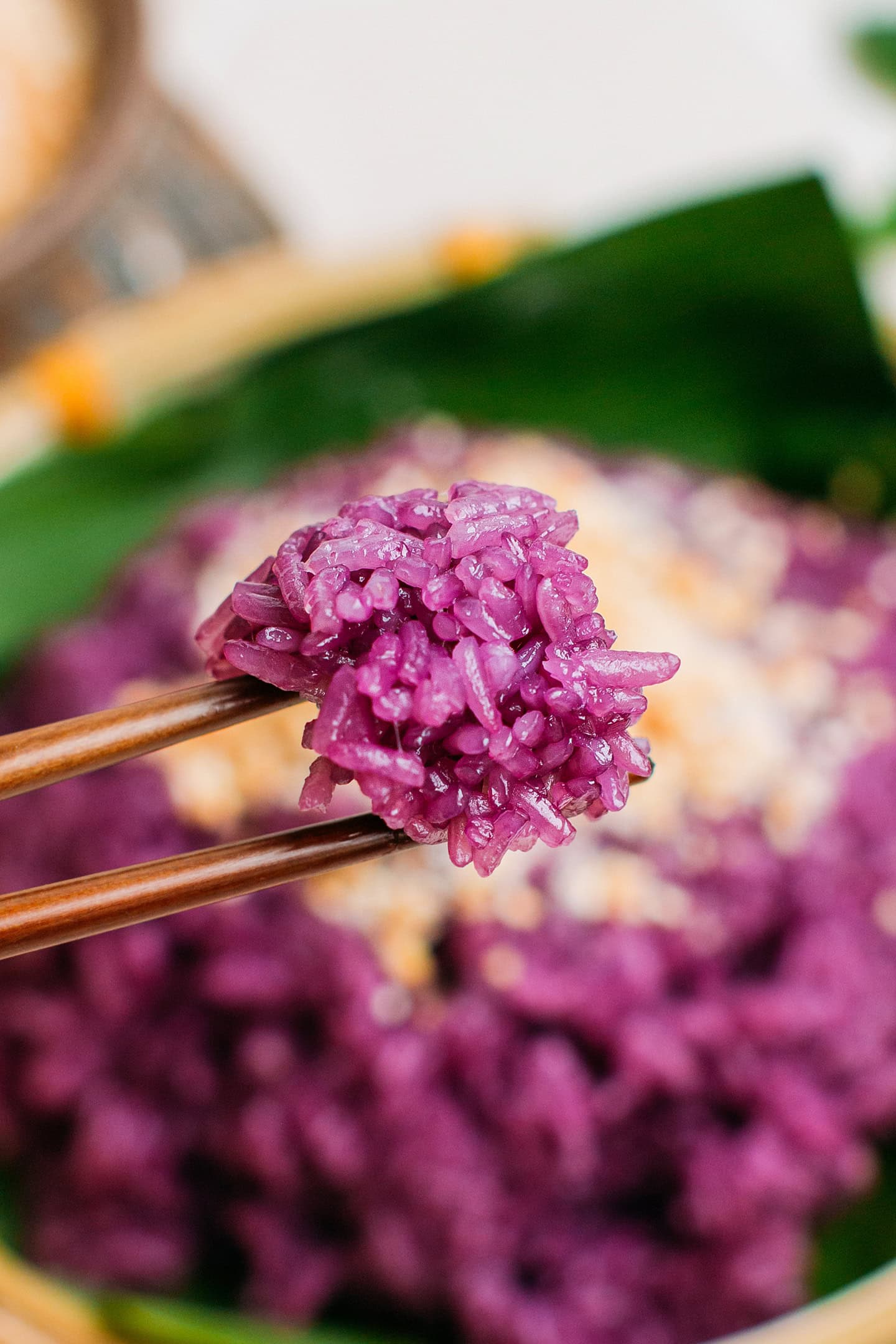
💬 FAQ
It basically tastes the same as regular sticky rice with a hint of coconut flavor. The ube powder doesn’t impart flavor to the rice.
Soaking the rice at room temperature is fine!
This is a twist on the authentic recipe, as I do not use magenta plant leaves but an alternative. The process of cooking the rice and seasoning it remains the same, though.
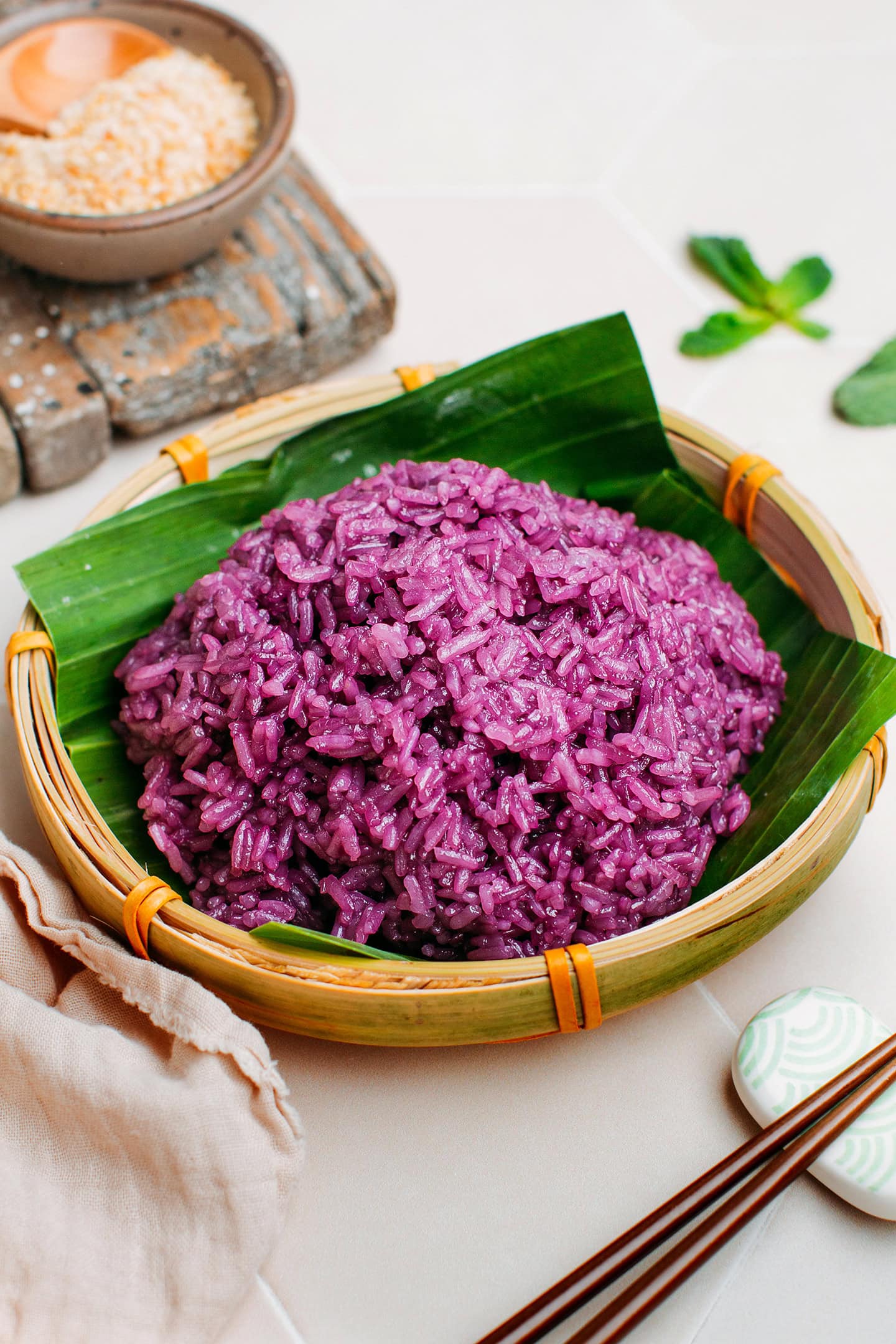

Want to Save This Recipe?
Enter your email below & we’ll send it straight to your inbox! Plus, you will receive new recipes every week!
I’d like to receive more tips & recipes from Full of Plants.
This site is protected by reCAPTCHA and the Google Privacy Policy and Terms of Service apply.
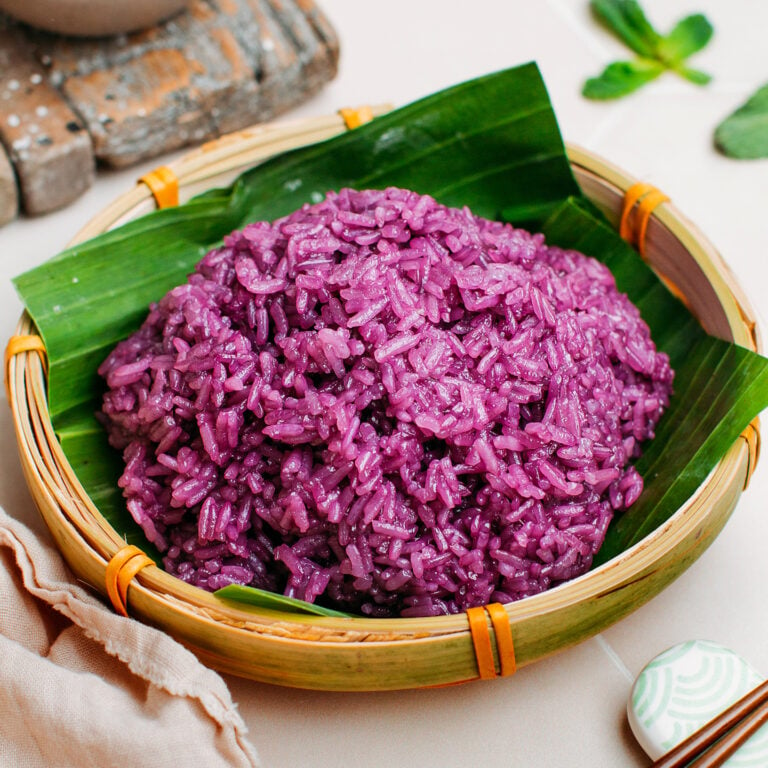
Purple Sticky Rice
Ingredients
- 2/3 cup uncooked sticky rice
- 2/3 cup water for soaking the rice
- 1 and 1/2 tsp ube powder
Coconut Milk
- 3 tbsp full-fat coconut milk
- 1 tsp sugar
- 1/8 tsp salt
Peanut & Sesame Topping (Optional)
- 2 tbsp roasted peanuts
- 1 tbsp sesame seeds
- 1 and 1/2 tbsp sugar
- 1/4 tsp salt
Instructions
Sticky Rice
- Wash the rice. Add the rice to a small bowl and cover with water. Gently swirl the rice using your hands until the water becomes cloudy. Strain the rice and repeat this step 2-3 times or until the water is almost clear. Transfer the rice to a small mixing bowl.
- Add the ube powder. Cover the rice with 2/3 cups of water. Add the ube powder and stir using a spoon.
- Soak it overnight. Cover the bowl with plastic wrap and soak the rice overnight or for at least 6 hours. You can stir the rice once halfway through soaking to ensure the grains are evenly colored.
- Prepare the coconut milk. Once the rice has soaked, it's time to make the coconut milk mixture. Add the coconut milk, sugar, and salt to a small mixing bowl. Stir using a spoon until the sugar has dissolved. Set aside.
- Prepare your steamer. Wet a thin cotton cheesecloth and arrange it on the inside of your bamboo steamer basket. Drain the soaked sticky rice and transfer it to the steamer basket. Close the basket with its lid.
- Steam. Fill a large pot (that can fit under your steamer basket) with 3-4 cups of water and bring it to a boil. Once boiling, place your bamboo basket on top of the pot and steam for 10 minutes.
- Drizzle with coconut milk. After 10 minutes, open the steamer and drizzle half of the coconut milk mixture over the sticky rice. Stir the rice with a spoon or chopsticks.
- Repeat. Close the steamer, and steam for another 10 minutes before drizzling the remaining coconut milk over the rice and stirring. Finally, steam for 5 more minutes.
- Enjoy. At this point, your sticky rice should be tender while still slightly chewy. It’s ready to serve!
Peanut & Sesame Topping (Optional)
- Crush the peanuts. Use a pestle and mortar or a small blender to grind the peanuts into small chunks. You can make them finer or coarser, depending on what you like.
- Toast the sesame seeds. Add the raw sesame seeds to a small pan and heat over low-medium heat for 3-5 minutes, stirring regularly until the seeds are golden brown. Be careful, they can burn very fast!
- Combine everything. Transfer the ground peanuts, toasted sesame seeds, sugar, and salt to a small bowl and stir to combine. You can then sprinkle a few tablespoons over your sticky rice!
Notes
Soak the rice – it’s essential!
Sticky rice is not like your daily short-grain rice; it needs to be soaked before being cooked. This allows the rice to absorb water, resulting in a more even and tender texture.Infuse it with pandan leaves.
If you can get your hands on fresh pandan leaves, feel free to place a few leaves on top of the sticky rice during the steaming step. It will infuse your rice with a wonderful floral aroma!Check the doneness of the rice.
Depending on the brand of rice used, the soaking time, and other factors, the steaming time may vary a bit. I suggest tasting the rice after 20 minutes. If it’s tender all the way through, your rice is cooked. If it’s still slightly hard on the inside, steam it for a bit longer.
About the Author
Thomas Pagot is the founder, photographer, and recipe developer behind Full of Plants. He created the blog in 2016 as a personal cookbook for vegan recipes. Through years of recipe development, Thomas has successfully grown Full of Plants into a trusted resource for plant-based recipes.

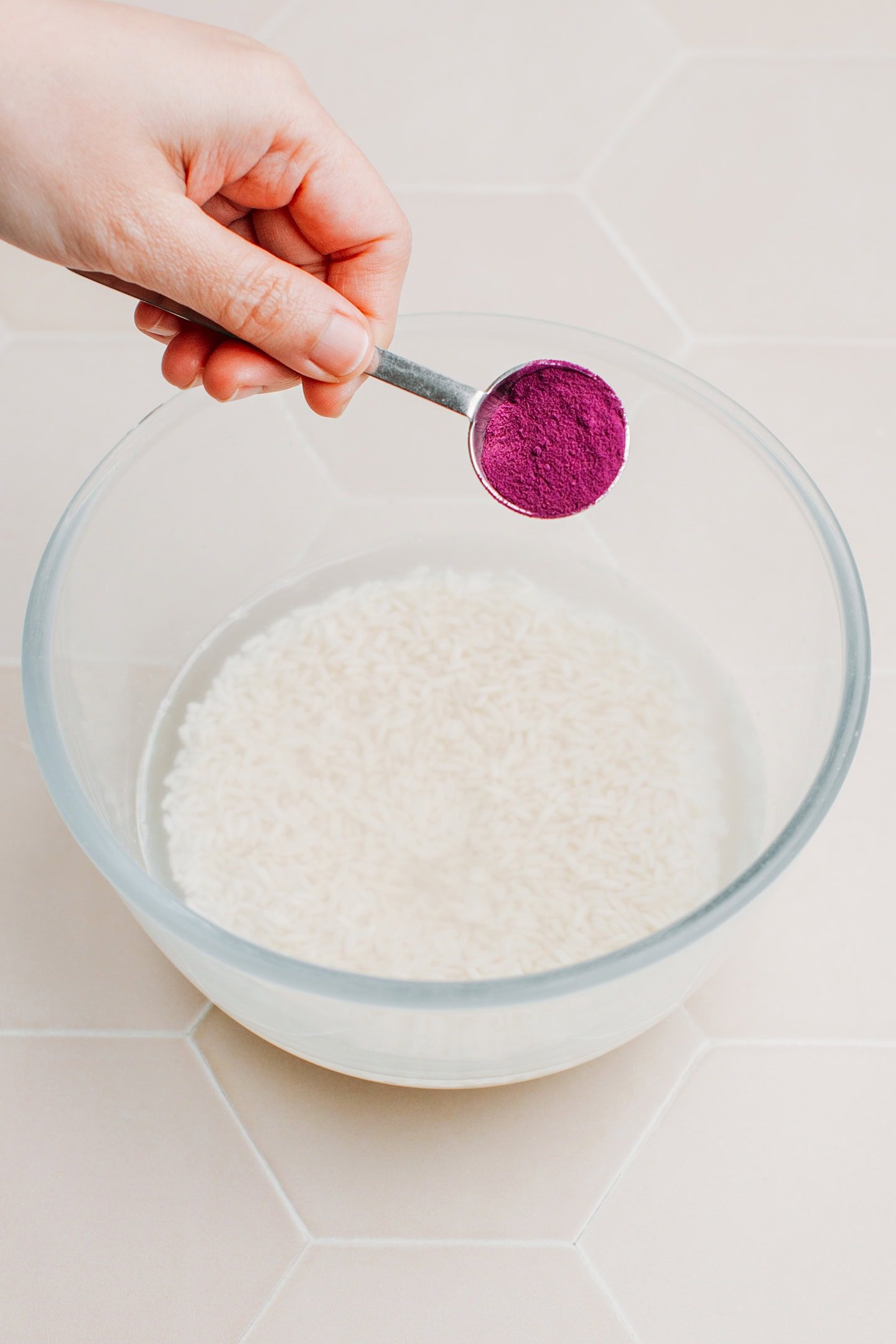
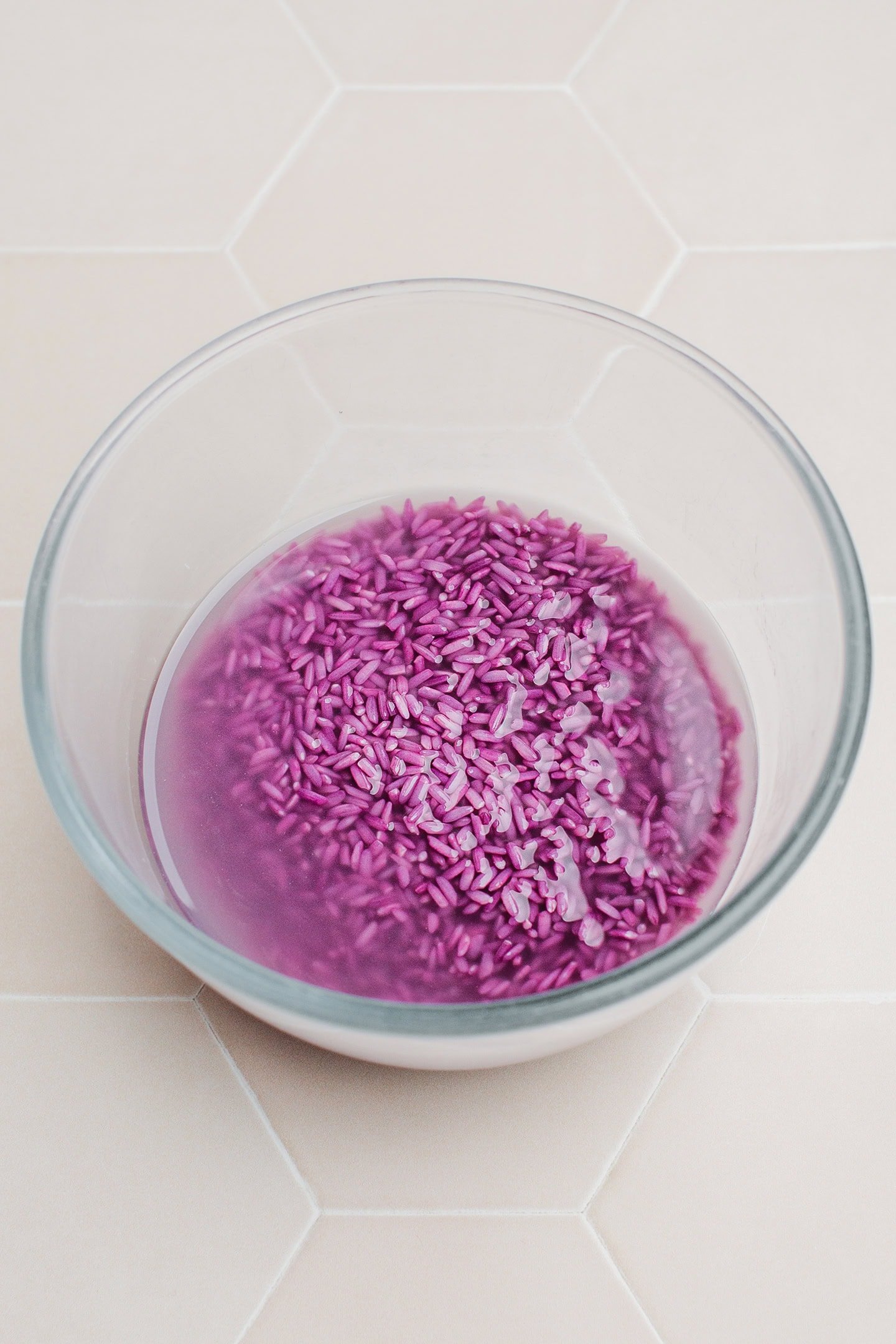
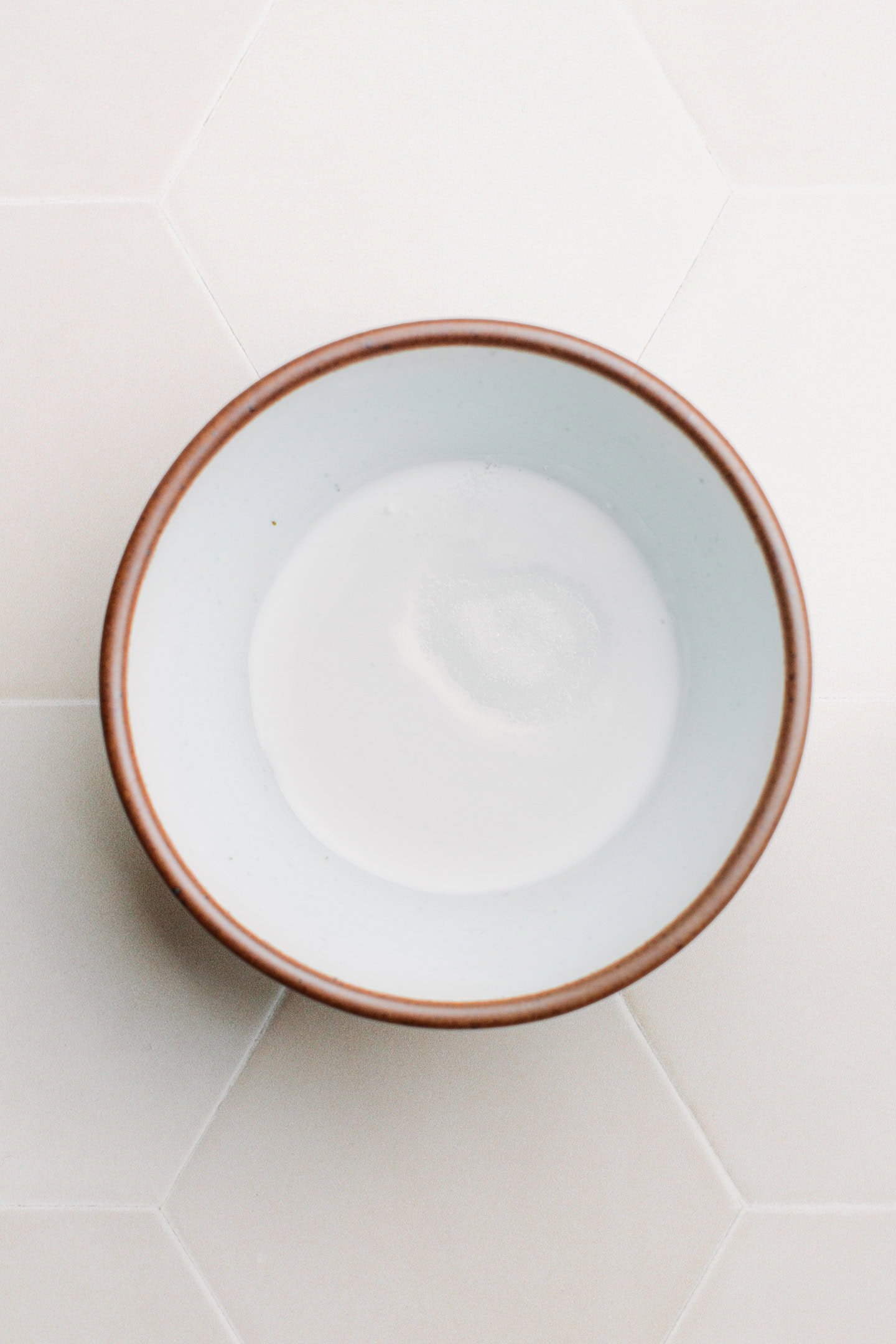
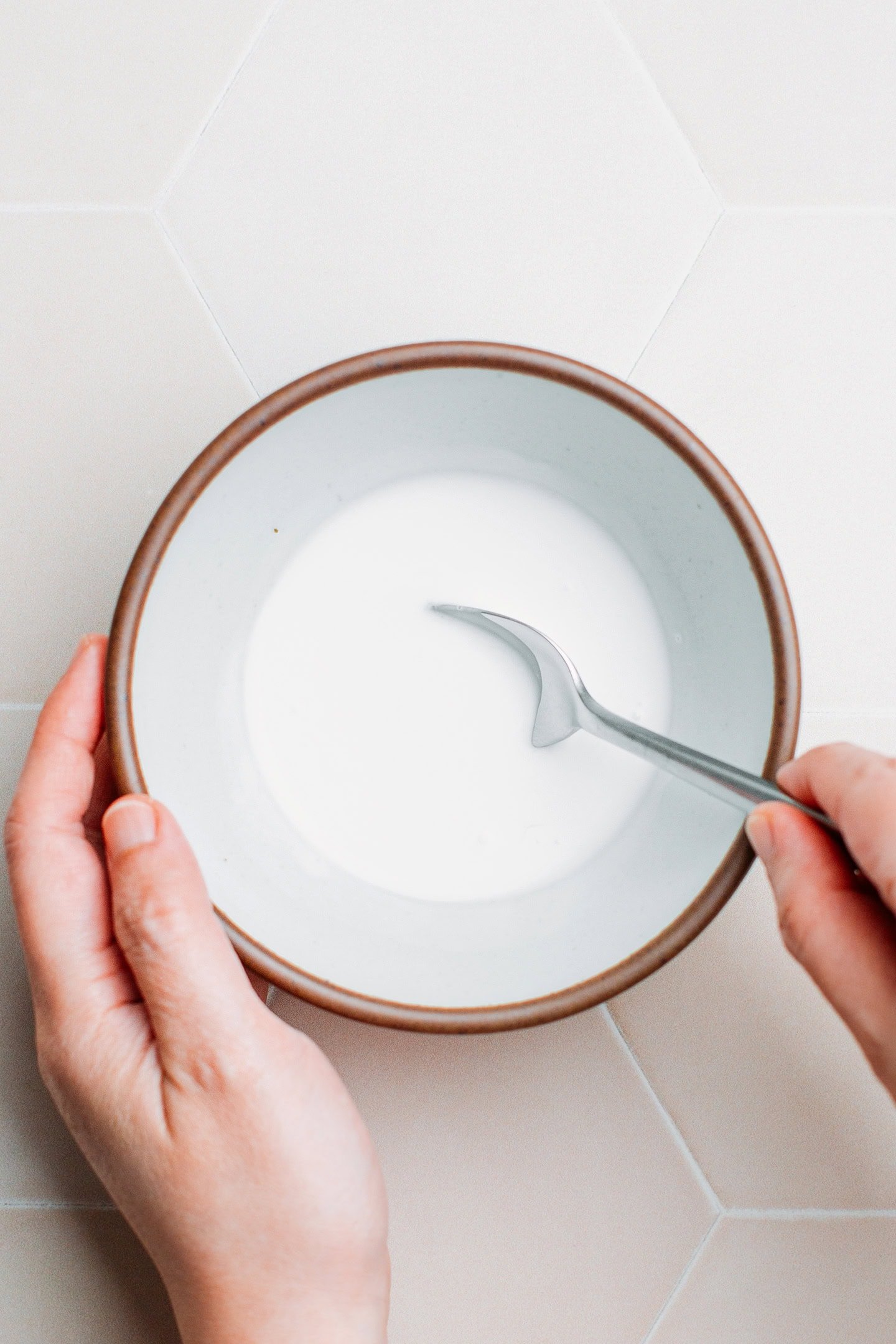
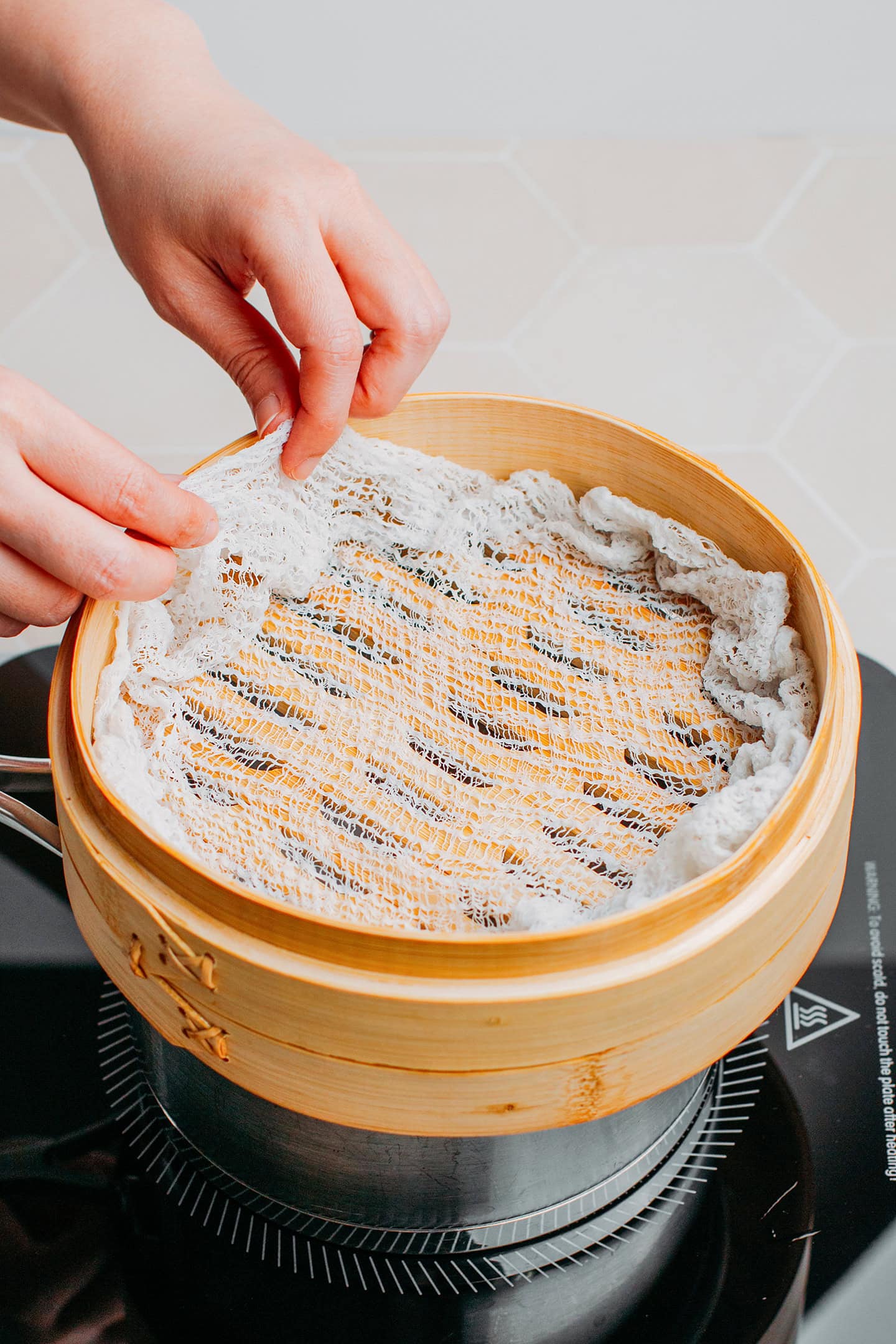

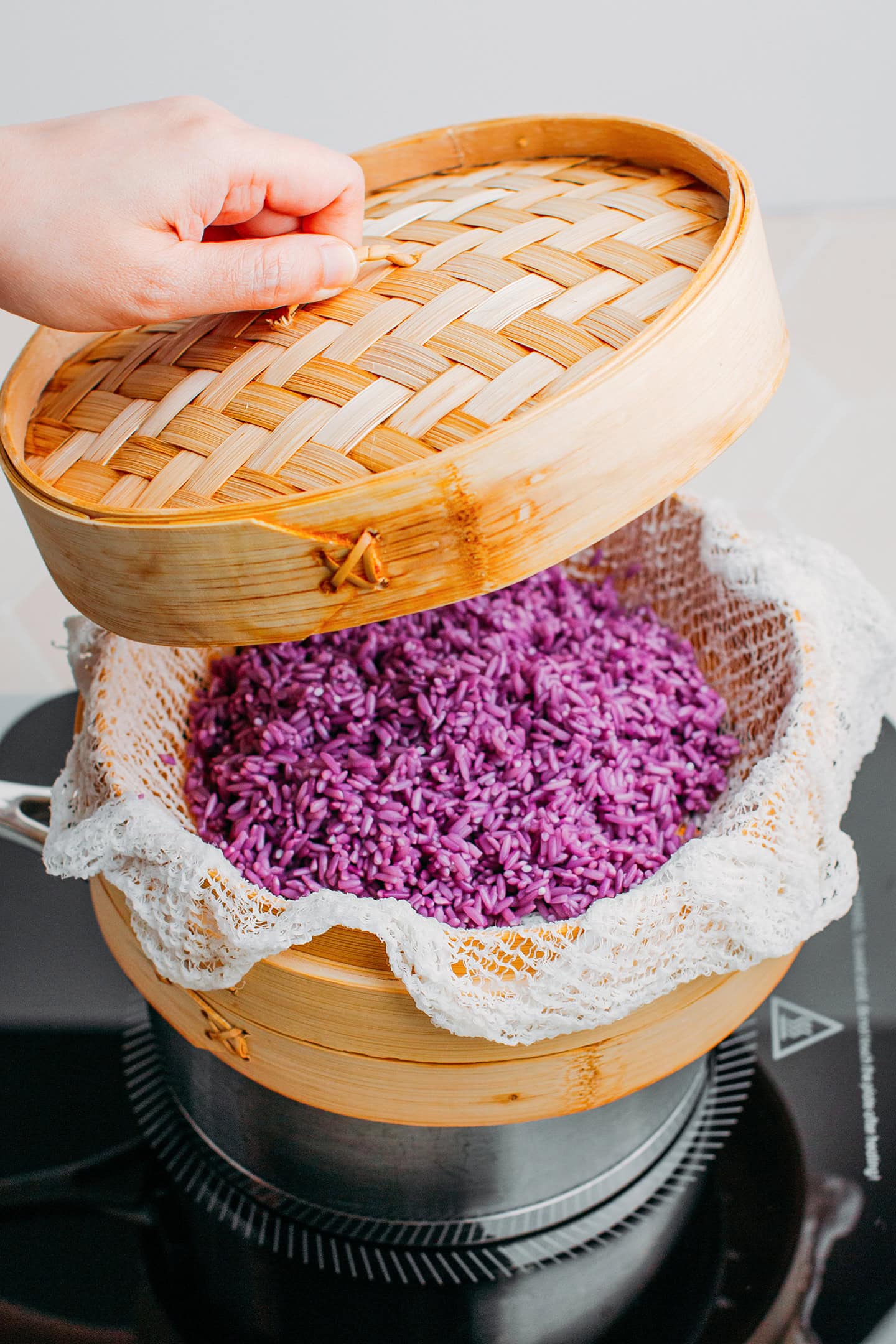
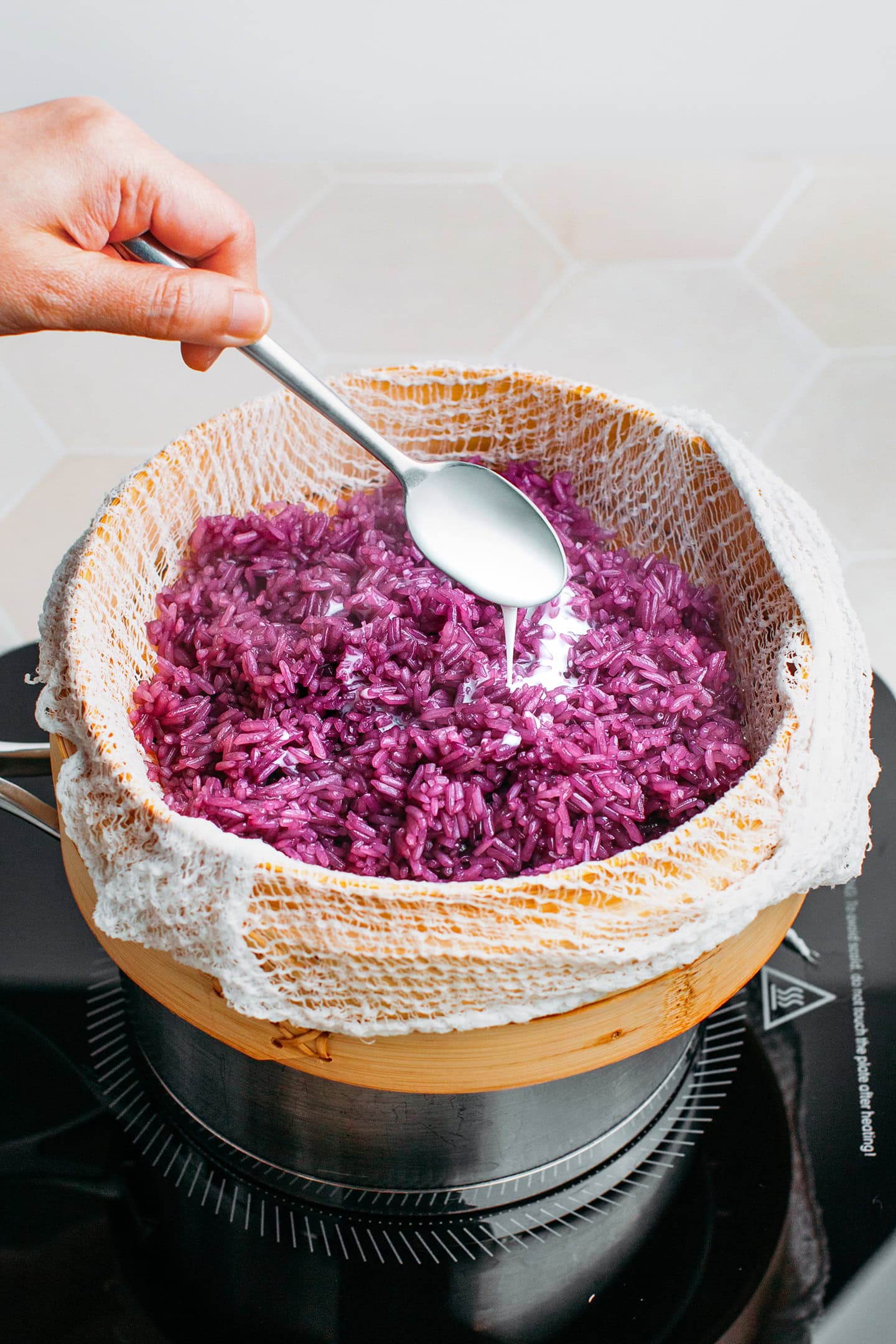
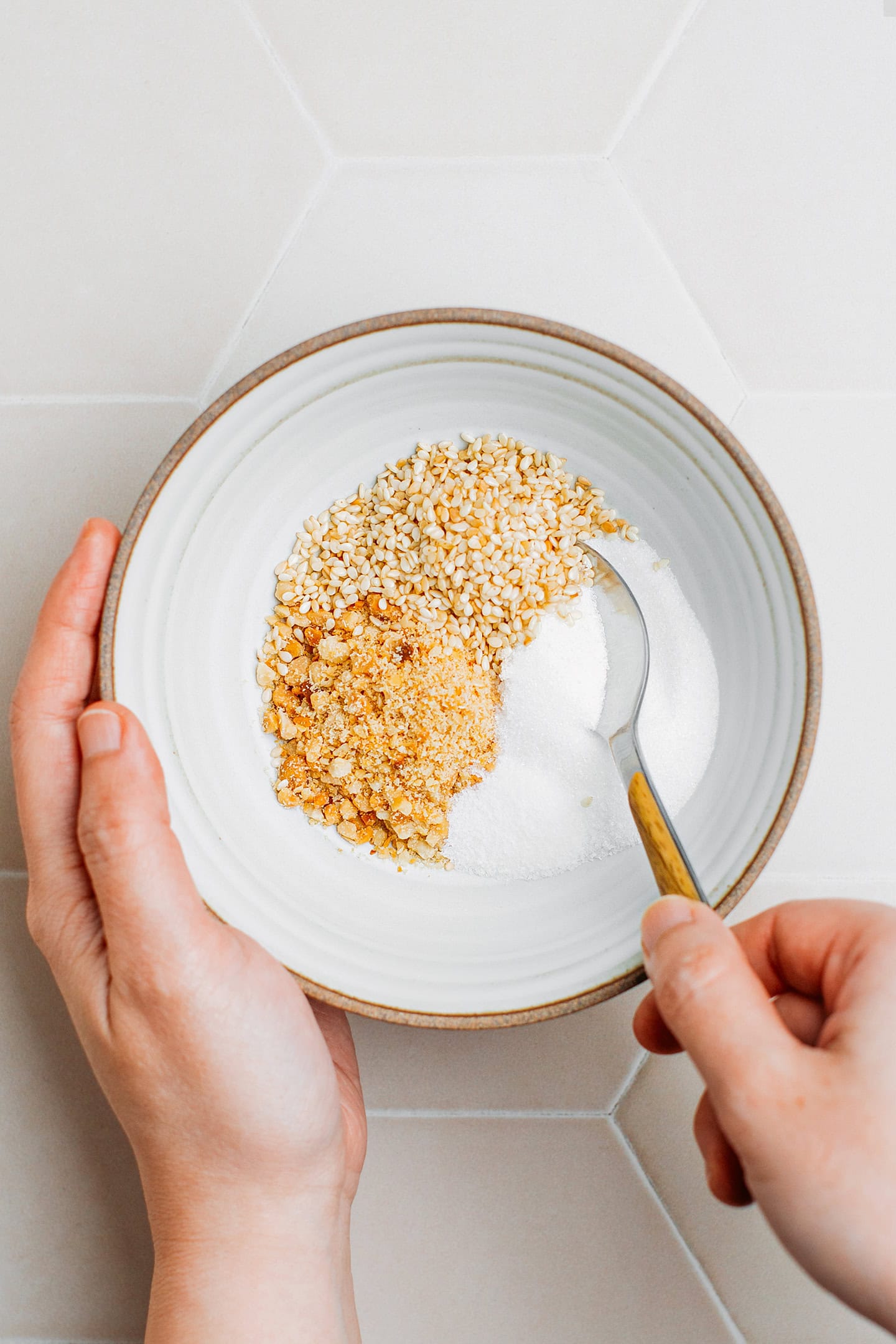
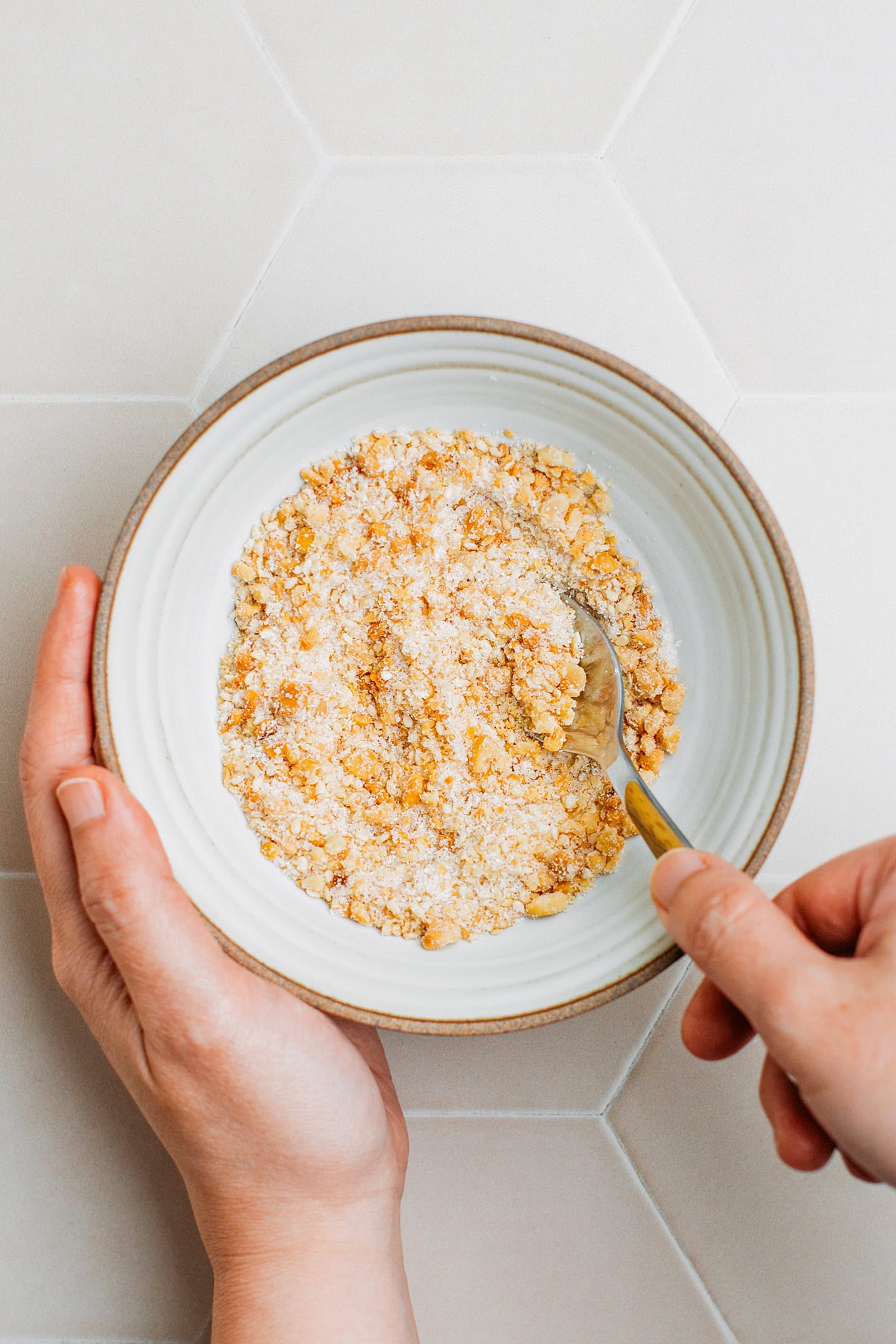
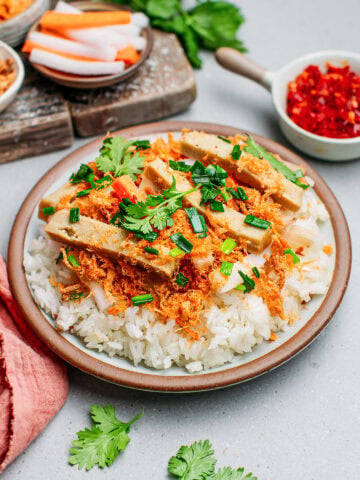
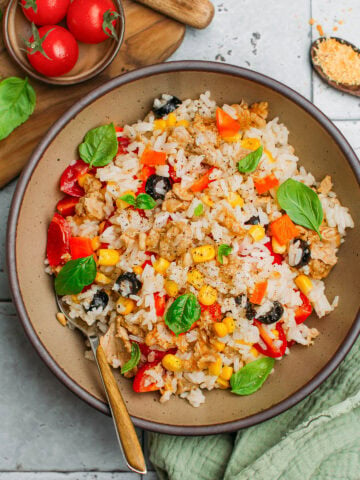


Leave a Comment